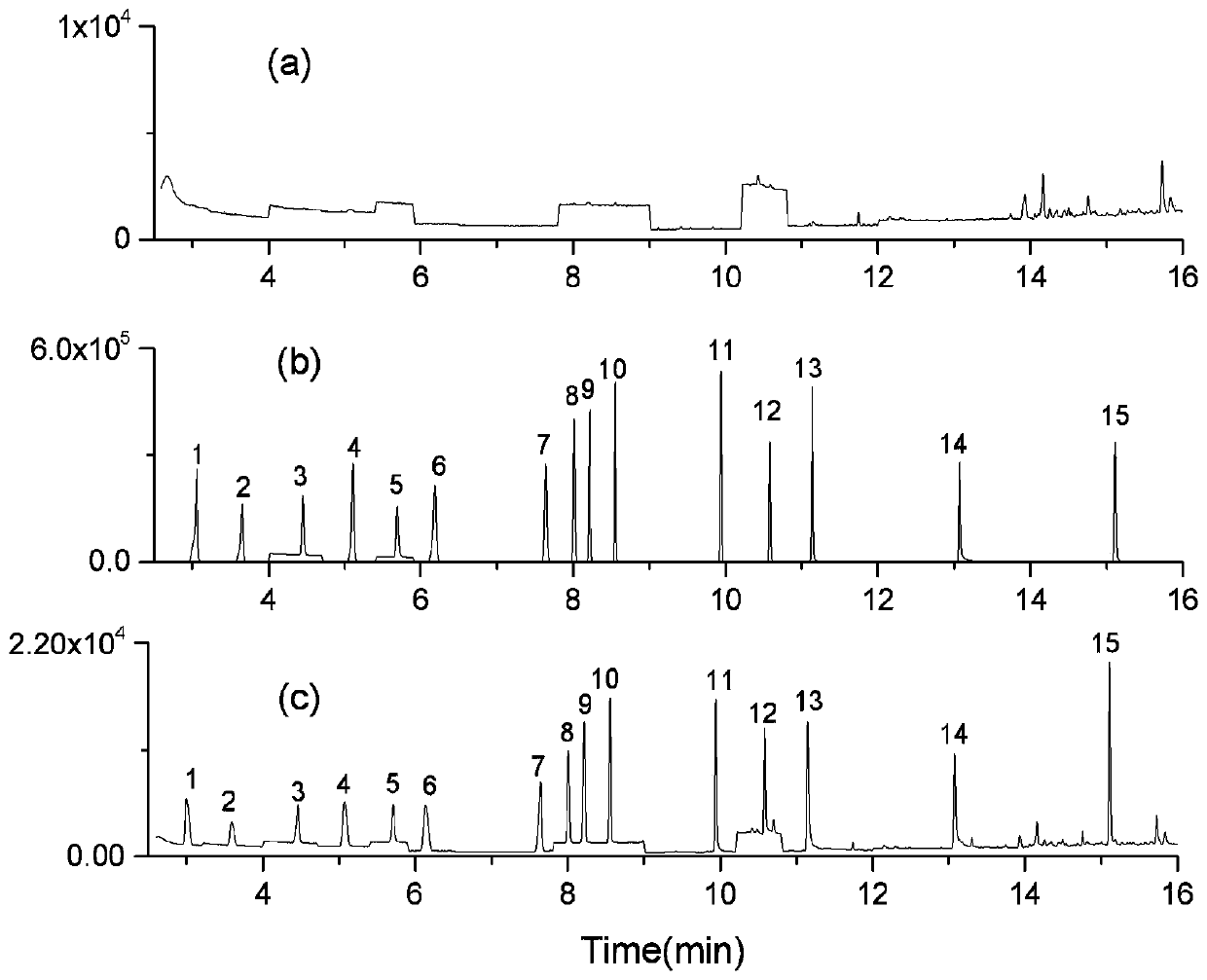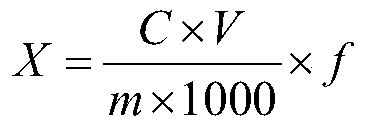Method for measuring residual quantity of pesticide adjuvant based on gas chromatography
A pesticide adjuvant and gas chromatography technology, which is applied in the field of pesticide adjuvant residue detection, can solve the problems of unguaranteed food safety, inaccurate data, poor detection effect, etc. wide effect
- Summary
- Abstract
- Description
- Claims
- Application Information
AI Technical Summary
Problems solved by technology
Method used
Image
Examples
Embodiment 1
[0048] A method for measuring pesticide adjuvant residues based on gas chromatography, the specific detection steps are as follows:
[0049]S1. Sample preparation: Sampling of fruits and vegetables (sampling sites are carried out in accordance with Appendix A of GB 2763-2016 (National Food Safety Standard for Maximum Residue Limits of Pesticides in Food)), pulverize and mix the samples, and homogenize them to make a homogenate , the prepared sample is divided into two parts, put into a clean sample container, sealed and marked, and then stored in a freezer at -18°C for later use;
[0050] S2, sample extraction: Weigh 10.0g homogenized sample into a 50mL plastic centrifuge tube, add 10mL acetonitrile solution and vortex for 2min, add QuEChERS extraction bag under ice bath condition (containing 6g anhydrous magnesium sulfate and 1.5g anhydrous Sodium acetate in water), then vortexed for 1min, and centrifuged at 5000r / min at a high speed for 5min in a centrifuge at 4°C;
[0051]...
Embodiment 2
[0073] A method for measuring pesticide adjuvant residues based on gas chromatography, the specific detection steps are as follows:
[0074] S1. Sample preparation: Sampling of fruits and vegetables (sampling sites are carried out in accordance with Appendix A of GB 2763-2016 (National Food Safety Standard for Maximum Residue Limits of Pesticides in Food)), pulverize and mix the samples, and homogenize them to make a homogenate , the prepared sample is divided into two parts, put into a clean sample container, sealed and marked, and then stored in a freezer at -18°C for later use;
[0075] S2, sample extraction: Weigh 10.0g homogenized sample into a 50mL plastic centrifuge tube, add 10mL acetonitrile solution and vortex for 2min, add QuEChERS extraction bag under ice bath condition (containing 6g anhydrous magnesium sulfate and 1.5g anhydrous Sodium acetate in water), then vortexed for 1min, and centrifuged at 5000r / min at a high speed for 5min in a centrifuge at 4°C;
[0076...
Embodiment 3
[0098] A method for measuring pesticide adjuvant residues based on gas chromatography, the specific detection steps are as follows:
[0099] S1. Sample preparation: Sampling of fruits and vegetables (sampling sites are carried out in accordance with Appendix A of GB 2763-2016 (National Food Safety Standard for Maximum Residue Limits of Pesticides in Food)), pulverize and mix the samples, and homogenize them to make a homogenate , the prepared sample is divided into two parts, put into a clean sample container, sealed and marked, and then stored in a freezer at -18°C for later use;
[0100]S2, sample extraction: Weigh 10.0g homogenized sample into a 50mL plastic centrifuge tube, add 10mL acetonitrile solution and vortex for 2min, add QuEChERS extraction bag under ice bath condition (containing 6g anhydrous magnesium sulfate and 1.5g anhydrous Sodium acetate in water), then vortexed for 1min, and centrifuged at 5000r / min at a high speed for 5min in a centrifuge at 4°C;
[0101]...
PUM
| Property | Measurement | Unit |
|---|---|---|
| Ionization energy | aaaaa | aaaaa |
| Granularity | aaaaa | aaaaa |
Abstract
Description
Claims
Application Information
 Login to View More
Login to View More - R&D
- Intellectual Property
- Life Sciences
- Materials
- Tech Scout
- Unparalleled Data Quality
- Higher Quality Content
- 60% Fewer Hallucinations
Browse by: Latest US Patents, China's latest patents, Technical Efficacy Thesaurus, Application Domain, Technology Topic, Popular Technical Reports.
© 2025 PatSnap. All rights reserved.Legal|Privacy policy|Modern Slavery Act Transparency Statement|Sitemap|About US| Contact US: help@patsnap.com



